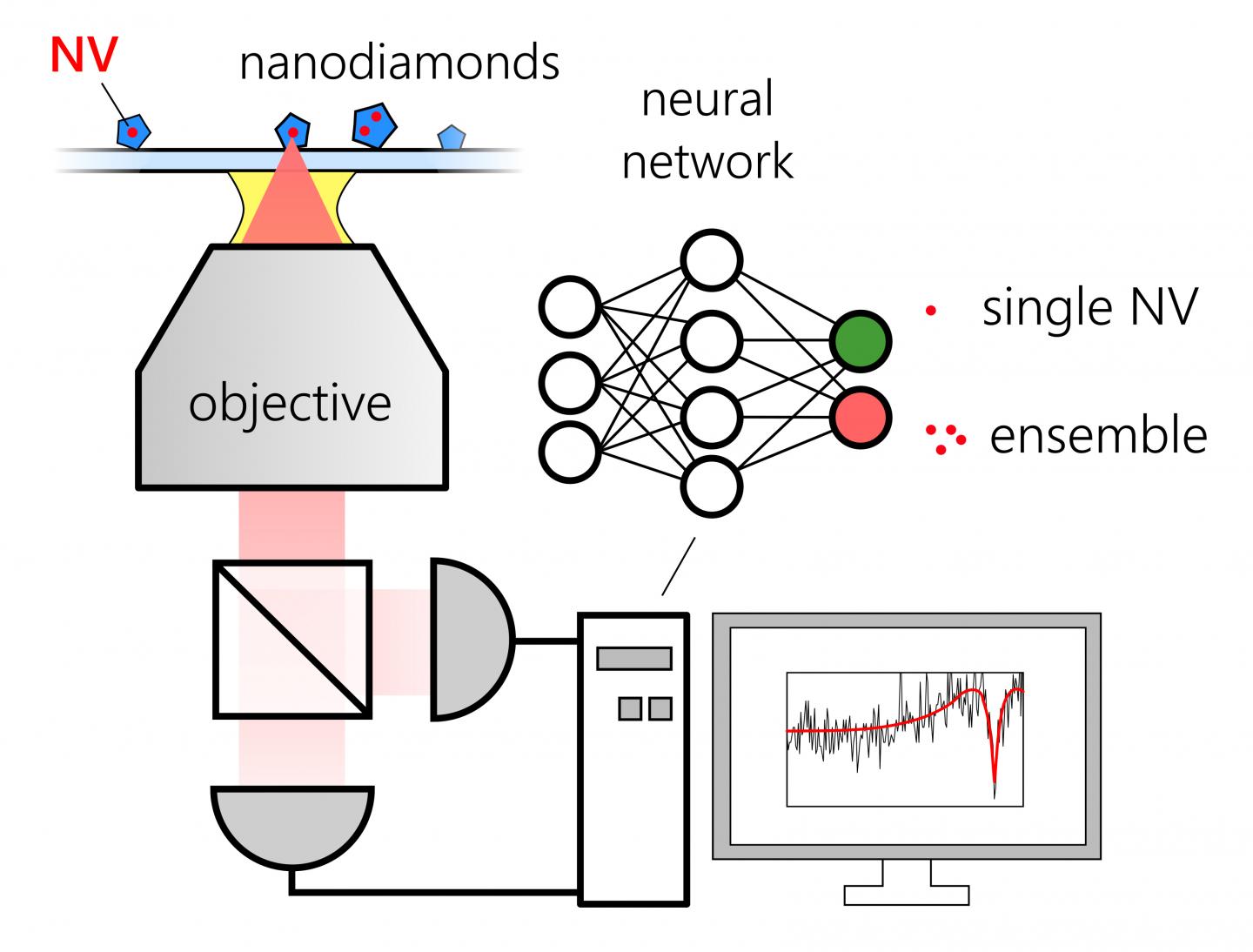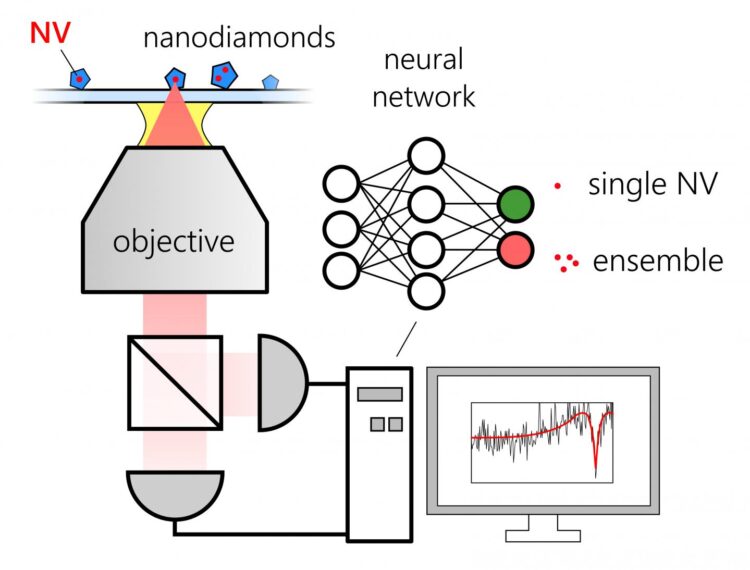
Credit: Purdue University image/Simeon Bogdanov
WEST LAFAYETTE, Ind. — For quantum optical technologies to become more practical, there is a need for large-scale integration of quantum photonic circuits on chips.
This integration calls for scaling up key building blocks of these circuits – sources of particles of light – produced by single quantum optical emitters.
Purdue University engineers created a new machine learning-assisted method that could make quantum photonic circuit development more efficient by rapidly preselecting these solid-state quantum emitters.
The work is published in the journal Advanced Quantum Technologies.
Researchers around the world have been exploring different ways to fabricate identical quantum sources by “transplanting” nanostructures containing single quantum optical emitters into conventional photonic chips.
“With the growing interest in scalable realization and rapid prototyping of quantum devices that utilize large emitter arrays, high-speed, robust preselection of suitable emitters becomes necessary,” said Alexandra Boltasseva, Purdue’s Ron and Dotty Garvin Tonjes Professor of Electrical and Computer Engineering.
Quantum emitters produce light with unique, non-classical properties that can be used in many quantum information protocols.
The challenge is that interfacing most solid-state quantum emitters with existing scalable photonic platforms requires complex integration techniques. Before integrating, engineers need to first identify bright emitters that produce single photons rapidly, on-demand and with a specific optical frequency.
Emitter preselection based on “single-photon purity” – which is the ability to produce only one photon at a time – typically takes several minutes for each emitter. Thousands of emitters may need to be analyzed before finding a high-quality candidate suitable for quantum chip integration.
To speed up screening based on single-photon purity, Purdue researchers trained a machine to recognize promising patterns in single-photon emission within a split second.
According to the researchers, rapidly finding the purest single-photon emitters within a set of thousands would be a key step toward practical and scalable assembly of large quantum photonic circuits.
“Given a photon purity standard that emitters must meet, we have taught a machine to classify single-photon emitters as sufficiently or insufficiently ‘pure’ with 95% accuracy, based on minimal data acquired within only one second,” said Zhaxylyk Kudyshev, a Purdue postdoctoral researcher.
The researchers found that the conventional photon purity measurement method used for the same task took 100 times longer to reach the same level of accuracy.
“The machine learning approach is such a versatile and efficient technique because it is capable of extracting the information from the dataset that the fitting procedure usually ignores,” Boltasseva said.
The researchers believe that their approach has the potential to dramatically advance most quantum optical measurements that can be formulated as binary or multiclass classification problems.
“Our technique could, for example, speed up super-resolution microscopy methods built on higher-order correlation measurements that are currently limited by long image acquisition times,” Kudyshev said.
###
This work was primarily supported by the U.S. Department of Energy (Office of Basic Energy Sciences, Division of Materials Sciences and Engineering) under Award DE-SC0017717 and the Defense Advanced Research Projects Agency (Defense Sciences Office) Extreme Optics and Imaging Program under Award HR00111720032. The project also received support from the National Science Foundation (Grant 2015025).
Patents associated with this project have been filed through the Purdue Research Foundation Office of Technology Commercialization. The research is affiliated with the Purdue Quantum Science and Engineering Institute, a Discovery Park center.
ABSTRACT
Rapid Classification of Quantum Sources Enabled by Machine Learning
Zhaxylyk A. Kudyshev, Simeon I. Bogdanov, Theodor Isacsson, Alexander V. Kildishev,
Alexandra Boltasseva, and Vladimir M. Shalaev
DOI: 10.1002/qute.202000067
Deterministic nanoassembly may enable unique integrated on-chip quantum photonic devices. Such integration requires a careful large-scale selection of nanoscale building blocks such as solid-state single-photon emitters by means of optical characterization. Second-order autocorrelation is a cornerstone measurement that is particularly time-consuming to realize on a large scale. Supervised machine learning-based classification of quantum emitters as “single” or “not-single” is implemented based on their sparse autocorrelation data. The method yields a classification accuracy of 95% within an integration time of less than a second, realizing roughly a 100-fold speedup compared to the conventional Levenberg-Marquardt fitting approach. It is anticipated that machine learning-based classification will provide a unique route to enable rapid and scalable assembly of quantum nanophotonic devices.
Media Contact
Kayla Wiles
[email protected]
Original Source
https:/
Related Journal Article
http://dx.





